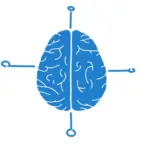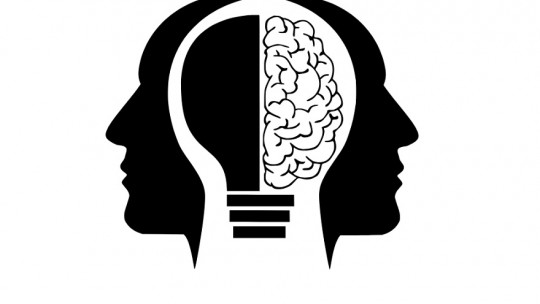
Rationalist and constructivist models share some fundamental characteristics, since they serve as a basis for the formation of cognitive therapies. But, in the same way, there are many characteristics that allow us to distinguish between the two.
In this article We will see the main differences between rationalist and constructivist models in Psychology and behavioral sciences in general in summary.
Main differences between rationalist models and constructivist models
Both the rationalist and constructivist paradigms try to explain or define what reality is.
Likewise, these two paradigms have given rise to different models that have been used as a basis for the formation of cognitive therapies for the treatment of different disorders.

Despite sharing the cognitive basis, these two paradigms present multiple differences in reference to the way of defining or understanding reality, in the way of evaluating and treating, in the role played by therapists, in how they define or perceive disorders or relapses, as well as the different types of cognitive therapies formed from the different theories of each paradigm.
Below we will mention and describe the main differences between the two models and cite some of the cognitive therapies that are based on one or the other paradigm.
1. Way of understanding reality
Rationalist or objective models, as their name indicates, understand reality as something objective, which exists independently of the subject and that there is only one possible, that is, the reality perceived by one person will be the same as that perceived by another. In this way individuals have to discover the only possible reality.
In contrast to this, constructivist models are based on the idea that there is no single reality, but that it is constructed and invented by each individual giving rise to multiple realities that will often be contrary to each other.
2. Role of the subject in the perception of reality
The rational paradigm will see a passive role in the subject, the human being is reactive and responsive, understanding knowledge from the outside in and creating mental representations in the individual as copies of reality.
In this way, external information processing would occur without producing modifications to the perceived reality.
Contrary, the constructivist paradigm will understand a more active role of the subject ; In this case the human being will be proactive and goal-oriented. In this way, the particular perception of reality of each subject will be fundamental for the construction of each reality, conceiving it from the inside out, thus the cognitive structures of the individual are projected to the outside, shaping and constructing their reality.
3. Vision of knowledge
Rationalists understand knowledge as a direct and exact representation of reality That is, they adopt a deterministic view, since they believe that knowledge has a single valid and true meaning, which is reality.
Likewise, they will speak of the knowledge of a single true reality that, as we have already pointed out, the individual must discover, there is only one truth.
For its part, Constructivists conceive knowledge as an evolutionary, interpersonal and proactive process, presenting multiple interpretations and different viable or possible forms of reality. Therefore, true knowledge will not be unique but will appear different according to the constructions of each subject and will be evaluated by internal consistency or social consensus. The therapist who adopts a strong constructivist model will understand that truth does not exist as such.
In reference to knowledge, it should also be noted that rationalist models focus exclusively on cognition; On the other hand, constructivist models are also interested in and value as necessary working with the emotions and behaviors of the individual.
4. Evaluation method
Regarding the evaluation process rationalists will present and define a more specific diagnosis, focused on the problem that the patient presents and with the main purpose of controlling it.
On the contrary, constructivists will present a more global vision, focused on the processes and development of the individual. That is, it will focus on the individual working and improving their cognitive systems.
5. Treatment and therapeutic style
Rationalist models will have as their main treatment objective correcting and eliminating dysfunctions, that is, the patient’s problem disappears. In order to achieve this goal, the therapist, as the only expert, will show a directive and instructive role; it will be the therapist who will give theoretical and technical instructions to the subject and carry out a clinical assessment.
Constructivist models, on the other hand, will understand the presence of two experts who collaborate with each other to achieve the goals of therapy. One of the experts would be the therapist with adequate knowledge of the processes of change and the patient would be the other expert with knowledge of her own life.
The constructivist therapist acts as support so that the client can explore new forms of relationships and knowledge, helping them in the process of reconstructing their cognitive system, since this is where they locate the appearance of the problem. In this way, the therapy is less structured and more flexible, with the main goal of the treatment being to facilitate the development of the subject.
6. Perception of disorders and relapses
Rationalist theories perceive and describe disorders as dysfunctions or deficits Therefore, the purpose of the therapy or intervention will be to control, eliminate or redirect them. Likewise, relapses will be understood as failures in the improvement or recovery process that should be minimized and avoided, being perceived as dysfunctional patterns that often appear in subjects due to lack of motivation.
On the contrary, constructivist theories They conceive disorders as a reflection of limitations that occur due to discrepancies between the environment and the subject’s current developmental capacity ; This is why the main purpose of treatment is to help the client’s development. Likewise, relapses will also be understood as limitations in the capacity for development, thus useful for learning and working with them.
7. How they understand emotions
Rationalist models believe that Irrational thoughts (not truthful or not consistent with reality) cause and generate negative and intense emotions that are interpreted as problems in the subject and therefore it is necessary to eliminate or control them.
On the other hand, postmodernist or constructivist models perceive and interpret emotions as an opportunity for knowledge; it is necessary to encourage subjects to experience and explore them in order to work and adapt them.
- Related article: “Emotional psychology: main theories of emotion”
8. Vision of insight
The rationalist paradigm will give greater importance to insight, understood as an internal vision. In this way, knowledge, insight, of irrational beliefs is necessary for an improvement to occur or for the subject to achieve a change.
For its part, the constructivist paradigm will not have as cognitive a vision as the rationalist one and will understand that insight helps in improvement or development but It also needs other emotional and behavioral aspects for change
- You may be interested: “Insight: what it is and what its phases are”
9. Types of cognitive therapy according to each model
Rationalist models present cognitive therapies divided into two groups.
First is the category of cognitive-behavioral therapies which in turn will be divided into therapies focused on training coping skills (aimed at coping with stressful situations and being able to better manage these sensations) and problem-solving techniques (aimed at training a more organized method). in problem solving).
An example of coping skills therapy would be Donald Meichenbaum’s stress inoculation training and problem solving therapy would be D’Zurilla and Golfried’s Problem Solving Therapy.
In the same way, The other category that constitutes cognitive therapies is that formed by therapies based on cognitive restructuring, which aims to identify and modify the maladaptive cognitions that cause and maintain the problem in the patient. Aaron Beck’s well-known cognitive therapy being an example of this.
In reference to constructivist models, in this case the therapies They will be based on constructivism, linguistics and narrative, pointing out that it is just as important to treat or take into account emotions and behavior as cognitions. As an example we could cite George Kelly’s Personal Construct Therapy.
Finally, some intermediate therapies will appear that show characteristics of the two models, both the rationalist and the constructivist. They are similar to classical or rationalist models because they use concepts similar to these, such as the terms of schemas or distortions, but they also present similarity to constructivist models, since they give more importance to aspects such as emotions, the therapeutic relationship or the joint use of various techniques. An intermediate type of therapy would be Jeffrey Young’s Schema Focused Therapy.








